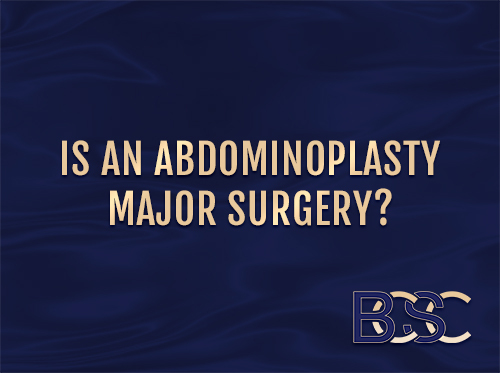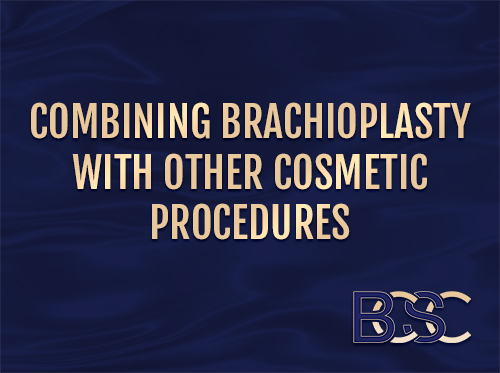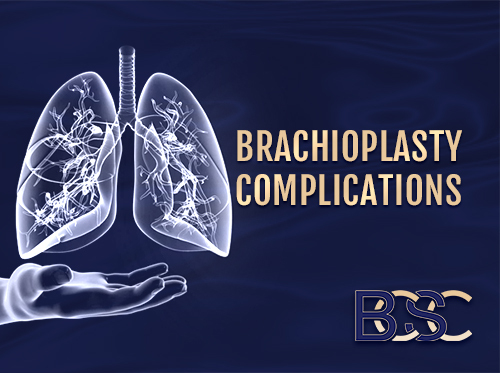How Significant Changes in the Body’s Morphology (Biology) Affects Fleur-de-Lis Abdominoplasty Surgery
Significant morphological changes resulting from massive weight loss impact Fleur-de-Lis abdominoplasty surgery, affecting the approach, customisation, execution, and outcomes.
Massive weight loss could cause extreme changes in body morphology (biology), many times necessitating surgical intervention to reinstate the body’s aesthetic and functional features. One such surgical procedure is Fleur-de-Lis abdominoplasty, which can be very effective in cases of extensive skin laxity and irregular contouring. Despite the specialisation in significant skin laxity in the lower and upper abdomen, significant morphological changes can have profound impact on the planning, execution, and outcomes of a Fleur-de-Lis abdominoplasty.
If you’re planning for Fleur-de-Lis abdominoplasty, it’s important to understand how morphological (biological) changes impact the procedure. Below is everything you need to know about changes in the body’s morphology affecting Fleur-de-Lis abdominoplasty surgery.
What is Morphology?
Morphology describes and compares individual variations of physical features and modifications of features and traits due to genetics, ageing, and lifestyle change. This also includes the external appearance of the body, like body shape and skin texture, and the internal structures, including muscles and organs. This helps health professionals characterise and assess patients’ physical conditions and medical history, plan treatments, and predict results.
An article on morphology notes, “[i]t is the study of the features comprised in the form and structure of an organism or any of its parts.”
Understanding a patient’s morphology after massive weight loss is essential for aesthetic and functional outcomes following surgeries such as the Fleur-de-Lis procedure (abdominoplasty). This is because extreme changes in body structure significantly affect surgical procedures.
How Weight Loss Affects Morphology
When one gains weight, the skin stretches to accommodate the extra fat. Similarly, when one loses weight, significant physical changes also occur. When a substantial amount of weight is lost, significant effects may take place, with the severity depending on factors such as age limit, amount, rate, and duration of weight loss, and genetics.
While the loss of massive kilos leads to a loss of fat in the body, in rare circumstances, it can also result in a loss of lean tissue and loose skin in the affected areas.
In many cases, interventions to treat these issues may become necessary because the skin, which may have been stretched so extensively and for long durations, cannot naturally retract to its original condition. This can also have an effect on the internal structure of the lower trunk.
Effects on the Flanks
Spanning from the bottom of the rib cage down to the hips on the left or right side of the spine is the area of the body known as the flanks. Weight loss will lead to loss of fat composition and distribution in the flanks. If the weight loss is significant, excess skin at the flanks will also form folds, especially when seated. These effects are easily noticeable, challenging to hide, and affect abdominal shape.
Effects on the Thighs
Massive weight loss can commonly result in loose skin on the thighs. This is because massive weight loss will lead to decrease in the subcutaneous layer, a main component of the thighs. Depending on the speed and extent of weight loss, the skin may remain loose.
Effects on the Buttocks
The two fleshy protuberances forming the lower and back part of the trunk, the buttocks are made primarily of fatty tissue, which decreases after massive weight loss. The loss of excess tissue in the buttocks can result in loose skin in the area, with the amount depending on the amount of weight loss and the speed at which the weight was lost.
Effects on the Hips
Massive weight loss will cause the hips to shrink, leaving loose skin. As with the other areas of the body, the extent of the excess skin and fat depends on the amount of weight lost, how the kilos came off, and other morphological factors.
Effects on the Mons Pubis
Morbid obesity may cause fat to accumulate of the mons pubis, the rounded mass of fatty tissue that lies over the pubic bones. Part of the external female genitalia, the mons pubis can be affected by significant fluctuations in weight.
Dramatic effects on the mons pubis, including loose skin and skin folds, can not only alter one’s overall appearance, but they can affect intimacy and impact sexual performance.
8 Potential Morphological Changes That Can Impact FDL Surgery
The primary goal of Fleur-de-Lis abdominoplasty procedure is to treat significant skin laxity, a common phenomenon in the majority of patients who have undergone massive weight loss. Although the design of this surgical technique is to treat extensive skin redundancy and contour issues, the morphological changes taking place after weight loss may play a huge role in the planning and outcome of the operation.
Below are eight important ways in which these morphological changes impact Fleur-de-Lis surgery abdominoplasty.
1. Excess Skin and Tissue Laxity
Widespread Skin Redundancy
Patients often face a problem of a high degree of skin redundancy following weight loss. This may be present in several segments of the body, such as the abdomen, flanks, and thighs. Most patients are distressed by the degree of excess abdominal skin, which may cause physical discomfort or functional deficiencies.
Fleur-de-Lis surgery, a technique specifically designed to treat excessive skin laxity, involves the use of horizontal incision and vertical incision that help specialist surgeons to remove significant or excess skin on the upper and lower abdominal areas.
Three-Dimensional excess skin treatment.
FDL abdominoplasty creates a three-dimensional result in the abdomen, rather than just the removal of redundant skin. This is especially important since a person who has undergone massive weight loss often needs great attention to detail. This three-dimensional approach goes way beyond mere elimination of redundant skin.
2. Changes in Skin Quality
Reduced Skin Elasticity
One of the most dramatic side effects of massive weight loss is skin elasticity. Whenever skin has been stretched over a long period, its collagen and elastin fibres may be damaged and its resilience diminished. This reduces its ability to retract after weight loss. A decrease in elasticity complicates the procedure and may have an effect on the final results.
Therefore, specialist surgeons must assess the skin quality during preoperative consultations. Where elasticity is significantly flawed, it may require customisation of Fleur-de-Lis or supplementary techniques so that the skin heals adequately and accommodates its new contour. The specialist surgeon may also need to minimise tension on the skin during its healing period to avoid possible complications.
Thinned Skin
As one loses weight, the layer of fat under the skin diminishes, which makes it even more fragile and susceptible to complications associated with surgical intervention. These complications, which can include delays in healing and infection, increase with age.
Specialist surgeons must take care when excising thinned skin, customising the procedure to minimise trauma and ensure optimal healing.
3. Muscle Laxity
Weakened Abdominal Muscles
Many times, substantial fluctuations in weight may result in weakened muscles in the lower abdomen, a condition known as diastasis recti. After dramatic weight loss, the abdominal muscles tend to stretch and weaken, leading to a less defined abdominal wall. This muscular laxity affects appearance and function.
Impact on Functional Outcomes
A strong abdominal wall is essential for core stability and strength. Weakened abdominal muscles impact mobility and can cause pain and discomfort. Therefore, physical activities might be hard for patients who have experienced massive weight loss, inhibiting their ability to exercise and function in general.
Residual Fat Pockets
Even with major weight loss, most patients are left with localised excess fat that affects the overall contour of the body. These resistant fat pockets can be quite vexing for patients who have worked so diligently to attain their weight loss goals and can often be resistant to healthy diet and exercise.
FDL abdominoplasty offers the potential for removal of such residual fat pockets with good outcomes. By incorporating VASER liposuction, the specialist surgeon is able to remove the excess fatty deposits, a well-balanced shape, and aesthetic results.
Comprehensive Contouring
A holistic approach should be considered for body contouring surgery in patients after weight loss. Surgeons must evaluate every aspect of the patient’s morphology, including skin laxity, the status of the abdominal muscle, and fat distribution in order to plan a single unified course of surgical action.
The capability of being able to https://bodycontouringsurgery.com.au/belt-lipectomy/belt-lipectomy-lower-body-lift-surgery-after-bariatric-surgery-a-comprehensive-guide/various potential complications in one session is important for the patient to achieve dramatic changes without the need for multiple procedures or revision surgeries. This extended contouring not only optimises aesthetic results but also allows patients to enjoy and embrace their new look after massive weight loss.
5. Implications for Surgical Planning
Extended Incisions
The degree of loose skin dictates the size of incisions. Although effective, a Fleur-de-Lis tummy tuck requires maximum skin removal. Massive weight loss will necessitate extensive Fleur-de-Lis incisions in a vertical and horizontal direction.
Personalised Approach
Each patient presents different challenges and needs; therefore, a personalised surgical approach becomes essential. The specialist surgeon must conduct detailed preoperative assessments to meet the patient’s needs. This involves evaluating skin quality, muscle strength, fat distribution, and aesthetic goals of the patient.
6. Scarring Considerations
Visible Scars
Scarring is a normal part of any surgery, especially those involving long and extensive incisions. Specialist surgeons must notify patients regarding the possibility of visible scars (horizontal scar and vertical scar) post Fleur-de-Lis abdominoplasty. While some people might be more prone to visible scarring, understanding scarring helps in setting realistic expectations, including dressing after surgery.
Read more: Risk of Outer Scar Following Fleur-de-Lis Surgery (Tummy Tuck)
Scar Management
Scar management is crucial for the appearance of post-surgical scars. Scar management options can range from topical treatments to silicone sheets and laser therapy.
Additionally, during the first consultation, he advises patients about postoperative care to promote wound healing and scar outcomes.
7. Post-Operative Considerations
Longer Recovery
Massive weight loss could also mean longer healing periods after surgery. FDL abdominoplasty complexity coupled with physiological changes that occur in the body might lead to longer healing periods. Due to this, the patient should be psychologically prepared for a long recovery. It’s important to note that good recovery is an essential element for maximum noticeable results.
Dr. Beldholm always provides patients with clear information about pre op, post-operative care, and a timeline for recovery. This can help patients be more realistic about their expectations during the recovery process. The information includes instructions on limitations in activities, wound care, and follow-up appointments.
Monitoring Complications
After massive weight loss, patients may experience post-surgical complications, including infection, impaired wound healing, and seroma. Therefore, it’s important for specialist surgeons to closely monitor the recovery and intervene at appropriate times.
The patient should also be aware of symptoms to watch out for and notify the specialist surgeon immediately. This will facilitate undisrupted healing and reduce the risk of postoperative complications.
8. Need for Additional Procedures
Abdominoplasty can be a foundation for further contouring of other areas of the body, such as thighs, upper arms, or buttocks. Sometimes, further procedures such as Thighplasty (thigh lift) Brachioplasty (arm lift), Breast Augmentation, or a Buttock Lift (gluteoplasty) might be required to meet the patient’s goals after massive weight loss. Identifying these needs, during the pre-operative assessment will lead to a more comprehensive and tailored treatment plan.
Some additional procedures may include:
Thighplasty
Thighplasty (or thigh lift) involves removing extra skin and fat from the thigh area. Many individuals who have undergone bariatric surgery or who have otherwise lost large amounts of weight at times consider having this surgery. Others who have simply experienced the effects of ageing also opt for this procedure.
Brachioplasty
Brachioplasty, or an arm lift, is the reshaping and contouring of the upper arm that involves removing excess skin and fat. It is particularly suitable for anyone who has drooping skin due to ageing problems or after extreme weight loss. Incisions for this surgery are generally on the inside of the arm, so the scars will be as inconspicuous as possible.
Gynaecomastia
This surgical operation is for males experiencing enlarged breasts due to hormonal imbalance or other causes and may involve liposuction, direct excision of glandular tissue, or both.
Breast Augmentation (augmentation mammoplasty)
Breast augmentation (Augmentation Mammoplasty) reduces breast size and shape using implants or fat transfer. The procedure involves making incisions in inconspicuous areas, placing implants either under the muscle or over it, and closing the incisions to minimise visible scarring. Breast lift is popular among individuals seeking to increase breast volume or breast fullness after weight loss or pregnancy.
Buttock Lift (gluteoplasty)
A buttock lift (Gluteoplasty) is a surgical makeover of the gluteal areas after weight loss designed to lift and firm loose skin of the buttocks and outer and inner thighs. The surgery, which involves a horizontal-type incision along the lower back, just above the buttocks, can be done as a standalone procedure or in combination with liposuction to better outline the contours.
Monsplasty
Monsplasty is a surgery that reshapes and tightens the mons pubis area (the fat overlying tissue above the pubic bone.) One can undergo this procedure to reduce excess skin and fat that may occur after weight loss or ageing. Liposuction can be utilised during the procedure to remove stubborn fat deposits.
Hernia Repair
Hernia repair surgery corrects hernia, a condition in which an internal organ bulges through a weakened area in the wall of the abdomen. Repair typically involves pushing the organ back into place and reinforcing the weakened area of the abdomen with sutures or mesh. This surgery alleviates pain and prevents complications.
Belly Button Restructuring
Belly button restructuring, also known as umbilicoplasty, is a cosmetic surgery that corrects and modifies the appearance of the navel. This may be done for reasons such as aesthetics or part of other abdominal surgeries such as traditional tummy tuck (Abdominoplasty). Additionally, the procedure can involve reshaping and repositioning the belly button to achieve a more desirable look.
VASER Liposuction (suction-assisted lipectomy)
This is an advanced form of liposuction (suction-assisted lipectomy) that involves the use of ultrasound technology to liquefy fat before the surgeon removes it. This technique, therefore, provides more detail in body contour and limits trauma to the surrounding tissues. It is an effective strategy that targets stubborn fat in various areas of the body.
Diastasis Recti Repair
Diastasis recti repair is a surgical procedure to treat abdominal muscle separation, a very common issue among postpartum women. This surgical technique entails stitching the separated muscles together. It also ensures better posture and less discomfort that may be associated with muscle separation.
FAQs
How Do Multiple Pregnancies Affect Body Morphology?
Multiple pregnancies can alter the patient’s body morphology significantly. The key changes include abdominal alterations, skin changes, distribution of weight, and loss of muscular tone. Repeated stretching of the skin due to multiple pregnancies will cause loss in skin elasticity.
Multiple pregnancies will also result in weakened abdominal muscles, causing complications such as diastasis recti and a weak core. This will affect the patient’s overall stability and strength. Additionally, multiple pregnancies will alter fat distribution in the body, leading to fat accumulation in the abdominal region and affecting the abdominal contour.
Significant Changes in Body Morphology Due to Massive Weight Loss Affect Fleur-de-Lis-Abdominoplasty?
For patients experiencing massive weight loss after years of morbid obesity, FDL abdominoplasty may help the patient significantly. This is because of the overall skin laxity, which will affect pre-operative planning and surgical outcomes. The presence of muscle weakness (diastasis recti) could also impact the procedure.
Additionally, excess fat will affect the contour, requiring combining Fleur-de-Lis with other procedures such as liposuction (suction-assisted lipectomy). Changes in skin quality after massive weight loss will also greatly affect scarring and recovery.
Dr. Beldholm Final Thoughts
Extreme morphological changes in the body after massive weight loss have a great impact on the planning and outcomes of Fleur-de-Lis abdominoplasty.
A good understanding of changes in body morphology after massive weight loss not only aids surgical planning but also targeting the outcomes of FDL abdominoplasty. Book a consultation today at Body Contouring and Surgery Clinic for a customised FDL abdominoplasty following significant weight loss.
Resources
- Dellon, A.L. Fleur-de-lis abdominoplasty. Aesth. Plast. Surg. 9, 27–32 (1985).
- Freemont, A. J., & Hoyland, J. A. (2007). Morphology, mechanisms and pathology of musculoskeletal ageing. The Journal of pathology, 211(2), 252–259.
- Allanson, J. E., Biesecker, L. G., Carey, J. C., & Hennekam, R. C. (2009). Elements of morphology: introduction. American journal of medical genetics. Part A, 149A(1), 2–5.
- Duff, C. G., Aslam, S., & Griffiths, R. W. (2003). Fleur-de-Lys abdominoplasty–a consecutive case series. British journal of plastic surgery, 56(6), 557–566.



